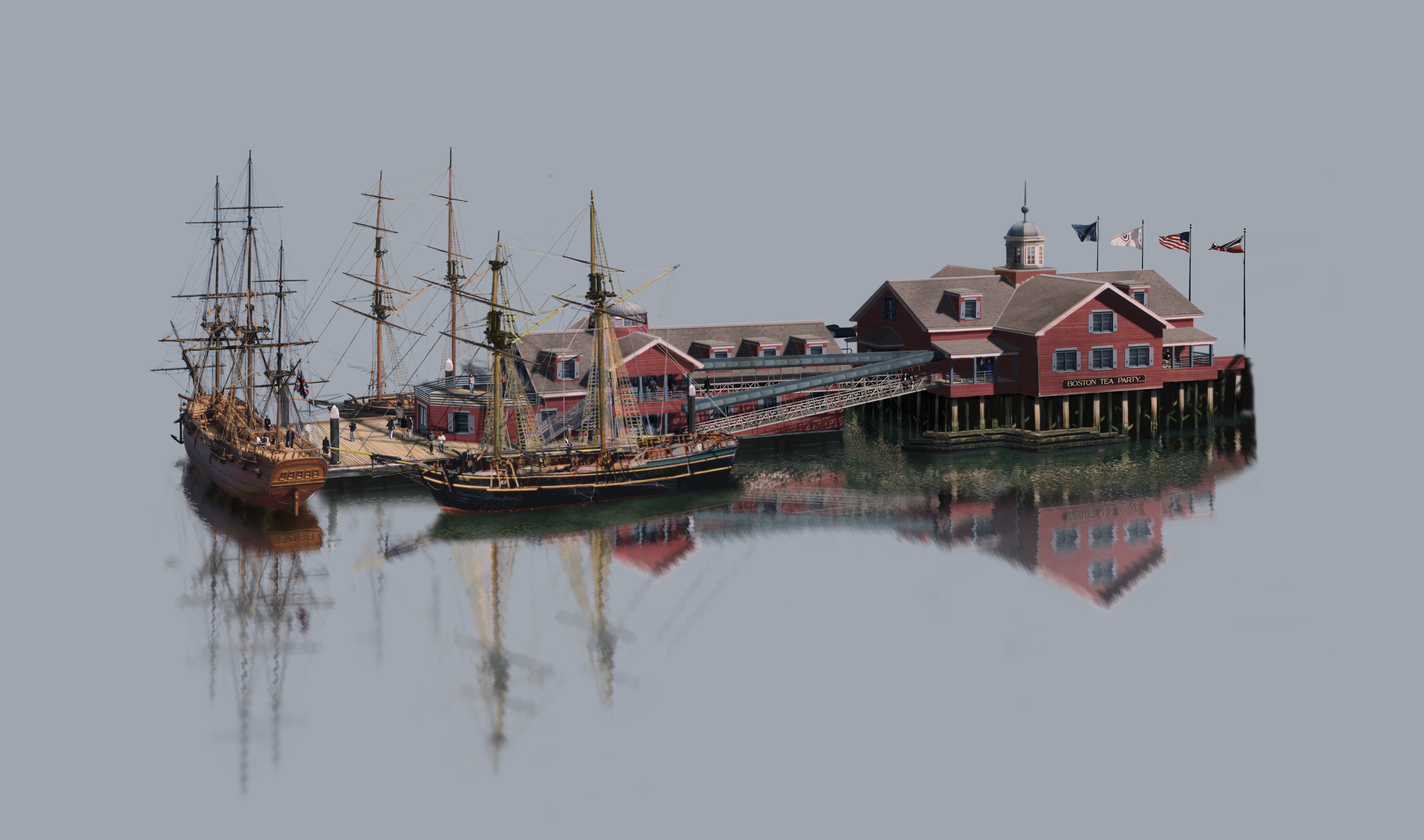AUGUST 7, 2012--Merging the building industry’s latest technology with one of the most famous stories in American history, Suffolk Construction recently completed construction of the new $27 million Boston Tea Party Ships & Museum in time for its grand opening ceremony.
Suffolk leveraged its “build smart” approach and state-of-the-art technologies to meet numerous challenges on this 18,700-sf project. One of the most significant challenges was finding a way to house the extensive mechanical, electrical, and plumbing (MEP) systems in the unusually tight confines of the museum’s attic space. To address this challenge, Suffolk implemented virtual models and BIM early in the planning process to re-work the layout of the MEP systems to ensure they would fit in the allotted space. This innovative solution allowed the team to prefabricate much of the MEP components off site, allowing for a more efficient installation on this very tight building site.
The two-story Boston Tea Party Ships & Museum, designed by Margulies Perruzzi Architects, sits on a floating barge with a Tavern/Tea Room on the top floor. The barge is surrounded by two historic replica ships, with a third ship expected to be added in 2014. The adjacent pier building contains a retail store, meeting rooms and offices. +
Related Stories
| Nov 17, 2014
Mastering natural ventilation: 5 crucial lessons from design experts
By harnessing natural ventilation, Building Teams can achieve a tremendous reduction in energy use and increase in occupant comfort. Engineers from SOM offer lessons from the firm’s recent work.
| Nov 14, 2014
Bjarke Ingels unveils master plan for Smithsonian's south mall campus
The centerpiece of the proposed plan is the revitalization of the iconic Smithsonian castle.
| Nov 14, 2014
Haskell acquires FreemanWhite, strengthens healthcare design-build business
The combination expands Haskell’s geographic presence by adding FreemanWhite’s offices in Chicago, Charlotte, Nashville, and San Diego. FreemanWhite will retain its name and brand.
| Nov 14, 2014
What college students want in their living spaces
In a recent workshop with 62 college students, architects from Little explored the changing habits and preferences of today's students, and how those changes affect their living spaces.
| Nov 14, 2014
JetBlue opens Gensler-designed International Concourse at JFK
The 175,000-sf extension includes the conversion of three existing gates to international swing gates, and the addition of three new international swing gates.
Sponsored | | Nov 12, 2014
Eye-popping façade highlights renovation, addition at Chaffin Junior High School
The new distinctive main entrance accentuates the public face of the school with an aluminum tube “baguette” system.
| Nov 12, 2014
Collaboration as competitive advantage
A collaborative planning and design process may seem like a common-sense goal, but the concept can be a challenge to achieve in the fragmented AEC industry. SPONSORED BLOG
Sponsored | | Nov 12, 2014
Williams Scotsman plugs into the jobsite
Many of our customers conduct important business from their temporary modular jobsite office and most require access to technology to get their job done effectively and efficiently. SPONSORED CONTENT
| Nov 12, 2014
Chesapeake Bay Foundation completes uber-green Brock Environmental Center, targets Living Building certification
More than a decade after opening its groundbreaking Philip Merrill Environmental Center, the group is back at it with a structure designed to be net-zero water, net-zero energy, and net-zero waste.
| Nov 12, 2014
Refocusing the shifted line
A recent trend in the practice of architecture that I’ve been noticing is the blurring of responsibility between design and construction coordination. I’m not sure why this trend began, but the subject is worth exploring, writes FXFOWLE's Mark Nusbaum.

















